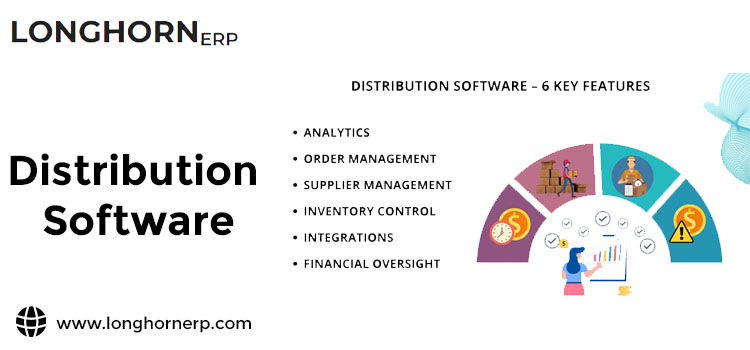In the dynamic landscape of modern business, effective distribution management stands as a cornerstone for success. Whether it’s delivering goods to customers or managing inventory across multiple locations, the challenges of distribution can quickly overwhelm inefficient systems. This is where distribution software steps in, offering a robust solution to optimize processes, enhance visibility, and drive overall business growth.
The Evolution of Distribution Software
Distribution software, also known as distribution management systems or logistics software, has come a long way from its early iterations. What started as simple inventory tracking systems has now evolved into sophisticated platforms capable of managing the entire distribution chain seamlessly.
In its essence, distribution software centralizes control over key aspects of the supply chain, including inventory management, order processing, warehouse management, and logistics. By integrating these functions into a unified system, businesses gain a comprehensive view of their operations, allowing for more informed decision-making.
Key Features and Benefits
Inventory Optimization:
One of the primary functions of distribution software is to optimize inventory levels. Through real-time tracking of stock levels, businesses can prevent stockouts, reduce excess inventory, and improve order fulfillment rates.
Streamlined Order Processing:
Automating order processing reduces manual errors and speeds up the entire fulfillment process. From order placement to shipping, every step becomes more efficient, leading to improved customer satisfaction.
Enhanced Visibility:
With a centralized platform, businesses gain real-time visibility into their entire supply chain. This visibility allows for better forecasting, timely decision-making, and proactive issue resolution.
Improved Customer Service:
Distribution software enables businesses to provide better customer service through accurate order tracking, faster response times, and streamlined communication channels.
Cost Reduction:
By optimizing inventory, reducing manual processes, and improving overall efficiency, distribution software helps in lowering operational costs and improving the bottom line.
Integration Capabilities:
Modern distribution software often integrates with other business systems such as accounting software, CRM systems, and e-commerce platforms. This seamless integration ensures data consistency across the organization.
Industry-Specific Solutions
Different industries have unique distribution challenges, and software providers have developed specialized solutions to address these needs. For example:
Retail Distribution:
Retail-focused distribution software emphasizes features such as point-of-sale integration, demand forecasting, and store replenishment.
Manufacturing Distribution:
For manufacturers, distribution software may include modules for managing complex bill of materials (BOM), production scheduling, and supplier management.
Food and Beverage Distribution:
This sector often requires specialized features such as batch tracking, expiry date management, and compliance with food safety regulations.
Implementing Distribution Software
While the benefits of distribution software are clear, successful implementation requires careful planning and execution:
Assessment and Planning:
Understand your current processes, identify pain points, and set clear goals for the software implementation.
Choosing the Right Solution:
Evaluate software options based on your industry needs, scalability, ease of use, and integration capabilities.
Training and Change Management:
Proper training ensures that employees can fully utilize the software. Additionally, prepare for the organizational changes that come with adopting new technology.
Continuous Improvement:
Regularly review performance metrics, gather feedback from users, and make adjustments to optimize the system further.
The Future of Distribution Management
As technology continues to advance, the future of distribution software looks promising. Artificial intelligence (AI) and machine learning are already making their mark, enabling predictive analytics for demand forecasting, dynamic routing optimization, and intelligent inventory management.
Furthermore, the rise of Internet of Things (IoT) devices allows for real-time tracking of shipments, monitoring of warehouse conditions, and proactive maintenance of equipment.
Conclusion
In the competitive world of distribution, businesses must leverage every advantage to stay ahead. Distribution software offers a comprehensive solution to streamline operations, enhance efficiency, and deliver exceptional customer service. Whether you’re a small retailer or a large manufacturer, investing in the right distribution software can pave the way for sustainable growth and success in the ever-evolving market landscape.

